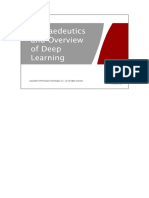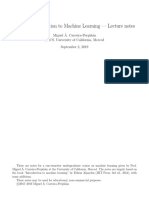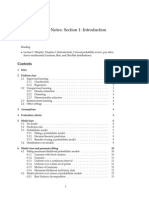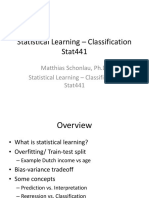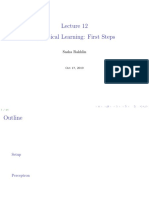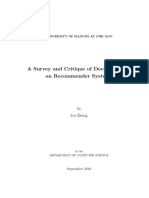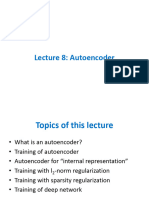0% found this document useful (0 votes)
33 views24 pagesLecture 2 Ai
The document discusses machine learning tasks including classification, regression, and transcription. It then covers topics such as learning algorithms' performance, experience, capacity, overfitting, underfitting, regularization, hyperparameters, validation sets, estimation, bias, variance and their decomposition.
Uploaded by
Enes sağnakCopyright
© © All Rights Reserved
We take content rights seriously. If you suspect this is your content, claim it here.
Available Formats
Download as PDF, TXT or read online on Scribd
0% found this document useful (0 votes)
33 views24 pagesLecture 2 Ai
The document discusses machine learning tasks including classification, regression, and transcription. It then covers topics such as learning algorithms' performance, experience, capacity, overfitting, underfitting, regularization, hyperparameters, validation sets, estimation, bias, variance and their decomposition.
Uploaded by
Enes sağnakCopyright
© © All Rights Reserved
We take content rights seriously. If you suspect this is your content, claim it here.
Available Formats
Download as PDF, TXT or read online on Scribd
/ 24


















